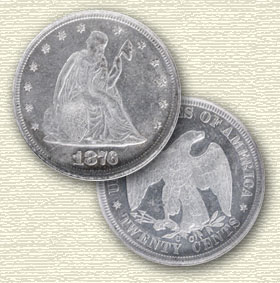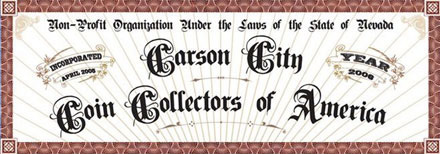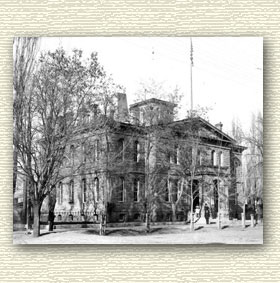- Posts: 614
- Thank you received: 0
1874-CC Gold Eagle CC Coin of the Week Oct 24, 2010
Less
More
15 years 1 week ago #1596
by Garryn
Replied by Garryn on topic Re:1874-CC Gold Eagle CC Coin of the Week Oct 24, 2010
Thanks for the kind words, Carsonite, and the interesting information about the two coins. Both coins were illustrated in their respective auctions. Whether high quality photos have been taken of the two coins yet, I dont know. High quality photographs in auction catalogs are a recent development.
Please Log in to join the conversation.
15 years 1 week ago #1598
by Belayoff
C4OA Lifer!
Replied by Belayoff on topic Re:1874-CC Gold Eagle CC Coin of the Week Oct 24, 2010
Garryn,
Excellent Coin of the Week posting. Gold was certainly in the limelight during that year while silver coinage had been under attack since the Coin Act of 1873.
I am working to assemble a full set of Carson City Eagles and am fortunate to own a very nice, AU-55 example of the 1874-CC Eagle. I purchased the coin through Southgate Coins approximately one year ago. Photo below.
I can only imagine the eye appeal and impressiveness of the big MS-64 and MS-65 graded examples, especially the Lang specimen described by Carsonite. Top quality, high grade silver coins can be stunning, as we all know. But a brightly lustrous, gem grade Eagle or Double Eagle is truly something else altogether!
Question for Garryn or anyone who would like to enlighten me ...
Copper spots frequent the surfaces of many gold coins. Their appearance is due to the lack of total amalgamation of the copper with the refined gold, thus copper spots are a natural occurring metallurgical process. Another naturally occurring metallurgical process that can result in a lower grade is surface porosity, typically found on many silver coins minted at Carson City.
My question then, is whether the typical copper spotting found on many CC gold coins is taken into consideration for grading purposes, as is porosity?
Belay Off
Excellent Coin of the Week posting. Gold was certainly in the limelight during that year while silver coinage had been under attack since the Coin Act of 1873.
I am working to assemble a full set of Carson City Eagles and am fortunate to own a very nice, AU-55 example of the 1874-CC Eagle. I purchased the coin through Southgate Coins approximately one year ago. Photo below.
[img size=400]
i788.photobucket.com/albums/yy166/BelayO...10-1874-cc-ngc55.jpg
[/IMG size=400]
1874-CC $10 AU-55 NGC
I can only imagine the eye appeal and impressiveness of the big MS-64 and MS-65 graded examples, especially the Lang specimen described by Carsonite. Top quality, high grade silver coins can be stunning, as we all know. But a brightly lustrous, gem grade Eagle or Double Eagle is truly something else altogether!
Question for Garryn or anyone who would like to enlighten me ...
Copper spots frequent the surfaces of many gold coins. Their appearance is due to the lack of total amalgamation of the copper with the refined gold, thus copper spots are a natural occurring metallurgical process. Another naturally occurring metallurgical process that can result in a lower grade is surface porosity, typically found on many silver coins minted at Carson City.
My question then, is whether the typical copper spotting found on many CC gold coins is taken into consideration for grading purposes, as is porosity?
Belay Off
C4OA Lifer!
Please Log in to join the conversation.
Time to create page: 0.187 seconds


